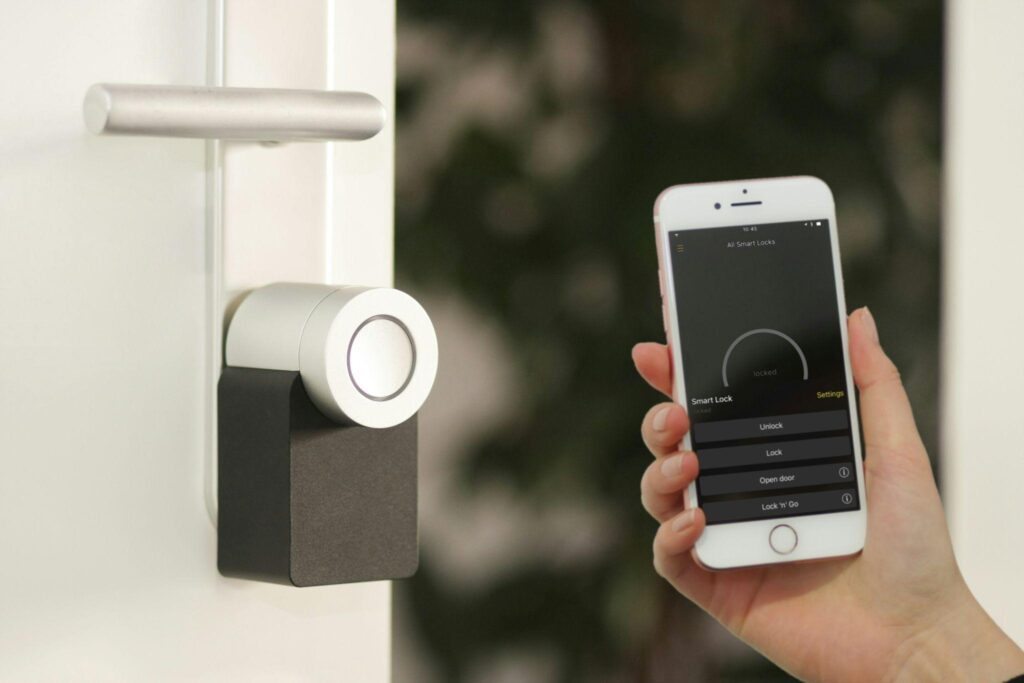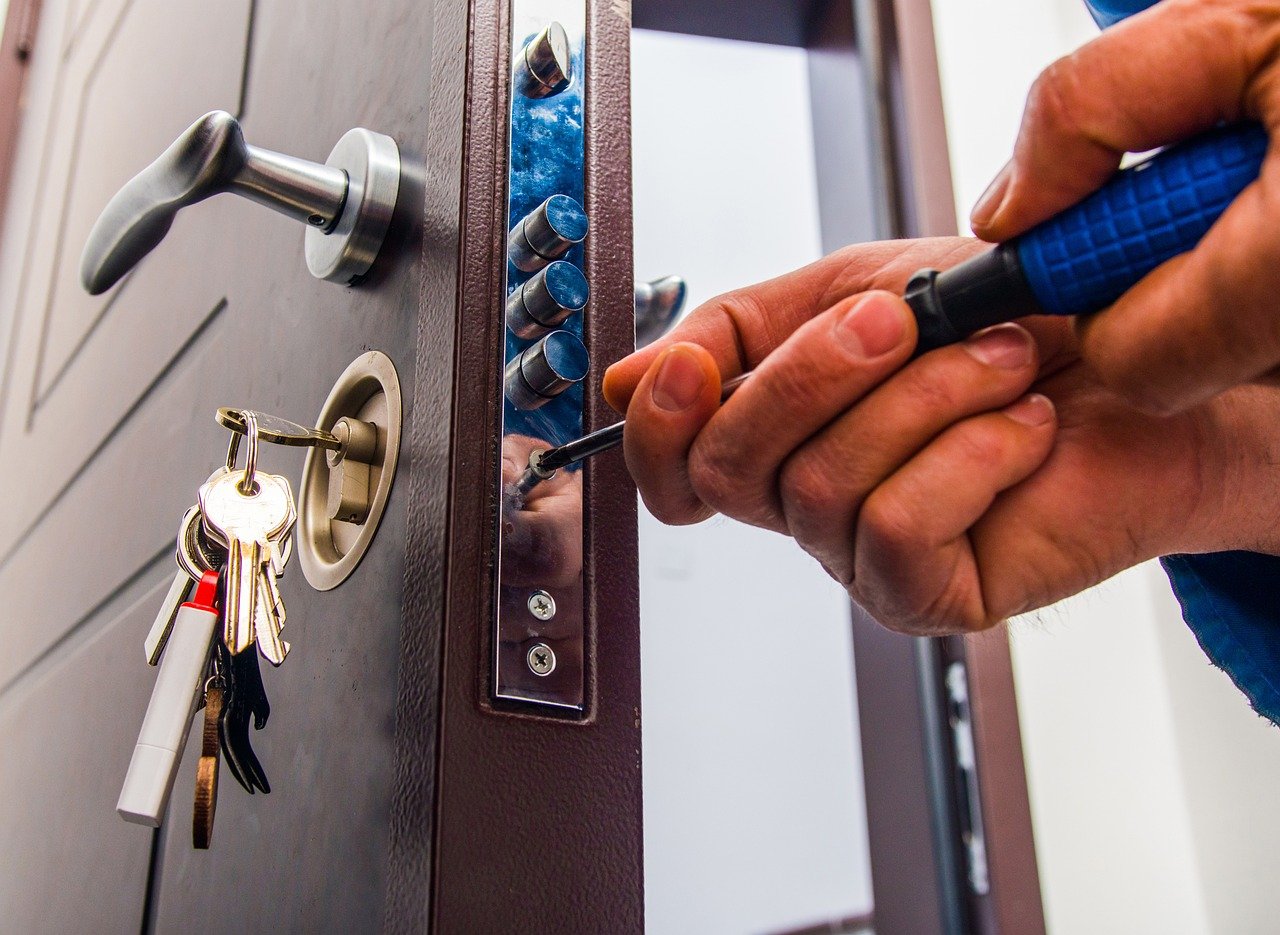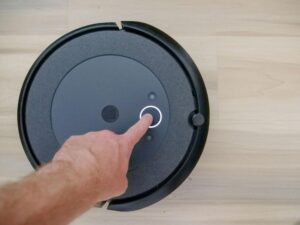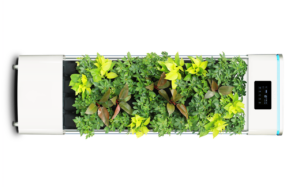Smart Locks: The Future of Home Security

What Are Smart Locks?
Smart locks represent a revolutionary advancement in home security technology, seamlessly blending traditional lock mechanisms with cutting-edge digital features. These innovative devices offer homeowners enhanced control, convenience, and peace of mind when it comes to safeguarding their properties.
Definition and Basic Functionality
Smart locks are electronic locking systems that allow users to secure and access their homes without the need for traditional keys. These devices use various technologies to authenticate users and grant access, including:
- Bluetooth connectivity: Allows for proximity-based unlocking
- Wi-Fi integration: Enables remote access and control
- Biometric recognition: Uses fingerprints or facial recognition for authentication
- Keypad entry: Allows access through personalized PIN codes
- Mobile app control: Provides comprehensive management via smartphones
The core functionality of smart locks revolves around their ability to communicate with authorized devices and users, creating a seamless and secure entry experience. They often incorporate encryption protocols to protect against unauthorized access attempts and offer features like temporary access codes for guests or service providers.
Types of Smart Locks
The smart lock market offers a variety of options to suit different preferences and security needs. Here’s a comparison of the main types:
| Type | Description | Best For |
|---|---|---|
| Deadbolt Replacement | Replaces entire existing deadbolt | Homeowners wanting a complete upgrade |
| Retrofit Smart Locks | Attaches to existing deadbolt interior | Those who want to keep exterior hardware |
| Lever-Handle Smart Locks | Replaces both knob and deadbolt | Doors without separate deadbolts |
| Padlocks | Portable smart locks for various uses | Securing gates, sheds, or lockers |
| Biometric Smart Locks | Uses fingerprints or facial recognition | High-security areas or tech enthusiasts |
Each type offers unique advantages, catering to different installation preferences and security requirements. The choice often depends on factors such as existing door hardware, desired features, and budget considerations.
Advantages of Using Smart Locks
Smart locks offer a multitude of benefits that go beyond the capabilities of traditional locking systems. From enhanced security to unprecedented convenience, these devices are revolutionizing the way we think about home protection and access management.
Enhanced Security
Smart locks provide a robust layer of security through advanced features and technologies:
- Real-time alerts: Receive instant notifications of lock activity
- Access logs: Keep track of who enters and exits your home
- Remote locking/unlocking: Secure your home from anywhere
- Tamper alarms: Get notified of any unauthorized access attempts
- Auto-lock functionality: Ensure your door is always locked after a set time
- Encryption: Protect against hacking attempts with advanced encryption protocols
These features collectively create a comprehensive security ecosystem that significantly reduces the risk of unauthorized entry. The ability to monitor and control access remotely adds an extra layer of protection, allowing homeowners to manage their security in real-time.
Convenience and Accessibility
One of the most significant advantages of smart locks is the unparalleled convenience they offer:
- Keyless entry: No more fumbling for keys or getting locked out
- Hands-free access: Useful when carrying groceries or managing children
- Temporary access codes: Easily grant access to guests, housekeepers, or service providers
- Integration with voice assistants: Control your lock with simple voice commands
- Scheduled access: Set specific times for automatic locking or unlocking
The accessibility features of smart locks are particularly beneficial for individuals with mobility issues or those who frequently host guests. The ability to grant and revoke access remotely eliminates the need for physical key exchanges, streamlining the process of managing home access.
Integration with Smart Home Systems
Smart locks serve as a cornerstone in the broader smart home ecosystem, seamlessly integrating with other devices to create a cohesive and automated living environment:
| Compatible Devices | Integration Benefits |
|---|---|
| Smart Speakers | Voice-controlled locking and unlocking |
| Security Cameras | Synchronized video feed with lock activity |
| Smart Thermostats | Adjust temperature based on entry/exit |
| Smart Lighting | Activate lights upon unlocking |
| Home Automation Hubs | Create complex routines involving locks |
This integration allows for sophisticated automation scenarios, such as having your home automatically secure itself, adjust the temperature, and turn off lights when you leave. The synergy between smart locks and other connected devices enhances both security and energy efficiency, making them a valuable addition to any smart home setup.
Potential Risks and Concerns

While smart locks offer numerous benefits, it’s crucial to consider potential risks and address common concerns associated with this technology. Understanding these issues helps users make informed decisions and take necessary precautions to ensure maximum security.
Hacking and Security Breaches
The digital nature of smart locks introduces new vulnerabilities that traditional locks don’t face:
- Wireless interception: Hackers may attempt to intercept Bluetooth or Wi-Fi signals
- Brute force attacks: Automated attempts to guess PIN codes
- Firmware vulnerabilities: Exploitation of software flaws in the lock’s operating system
- Man-in-the-middle attacks: Intercepting and altering communications between the lock and authorized devices
To mitigate these risks, manufacturers implement various security measures:
- End-to-end encryption: Protects data transmission between the lock and authorized devices
- Two-factor authentication: Adds an extra layer of verification for access
- Regular security updates: Addresses vulnerabilities and enhances protection
- Limited incorrect attempts: Locks out users after multiple failed access attempts
It’s worth noting that while hacking incidents have occurred, they are relatively rare. In 2016, a security researcher demonstrated vulnerabilities in certain Bluetooth smart locks, prompting manufacturers to enhance their security protocols. This incident underscores the importance of choosing reputable brands and keeping devices updated.
Dependence on Technology
The reliance on technology for basic home access raises concerns about potential failures and inconveniences:
| Scenario | Potential Solution |
|---|---|
| Power outage | Backup battery power or mechanical key override |
| Wi-Fi/Internet failure | Bluetooth or offline access modes |
| Smartphone loss or battery death | Keypad entry or backup physical key |
| System malfunction | Manual override options or emergency support |
To address these concerns, most smart locks incorporate:
- Backup power sources: Ensuring functionality during power outages
- Multiple access methods: Providing alternatives if one method fails
- Offline operation modes: Allowing basic functionality without internet connectivity
- Emergency override options: Mechanical key backups for critical situations
While technology dependence is a valid concern, proper planning and choosing a lock with multiple access methods can significantly mitigate these risks.
Top Smart Locks in the Market
The smart lock market offers a wide range of options, each with unique features and capabilities. This section highlights some of the top performers, providing insights into their strengths and user experiences.
Lock A: August Wi-Fi Smart Lock (4th Generation)
The August Wi-Fi Smart Lock is renowned for its sleek design and robust feature set:
- Wi-Fi built-in: No need for additional bridge or hub
- Auto-lock and unlock: Hands-free access based on proximity
- DoorSense technology: Alerts if door is left ajar
- Compatibility: Works with existing deadbolts
User Reviews:
- “Seamless integration with my smart home setup.” – ⭐⭐⭐⭐⭐
- “Easy installation, but battery life could be better.” – ⭐⭐⭐⭐
Lock B: Yale Assure Lock SL
Yale’s Assure Lock SL combines elegant design with advanced functionality:
- Touchscreen keypad: Sleek, key-free design
- Multiple access options: PIN code, key card, or smartphone app
- Voice assistant compatibility: Works with Alexa, Google Assistant, and Siri
- One-touch locking: Simple operation for quick security
User Reviews:
- “Love the keyless design and easy guest access.” – ⭐⭐⭐⭐⭐
- “Great lock, but occasional Wi-Fi connectivity issues.” – ⭐⭐⭐⭐
Lock C: Schlage Encode Smart WiFi Deadbolt
Schlage’s Encode offers a perfect blend of traditional and smart features:
- Built-in Wi-Fi: No additional hub required
- Fingerprint-resistant touchscreen: Ensures code privacy
- Built-in alarm technology: Senses potential door attacks
- Up to 100 access codes: Ideal for large households or frequent guests
User Reviews:
- “Rock-solid construction and reliable performance.” – ⭐⭐⭐⭐⭐
- “App could be more user-friendly, but overall great lock.” – ⭐⭐⭐⭐
| Feature | Lock A | Lock B | Lock C |
|---|---|---|---|
| Wi-Fi Built-in | Yes | No (requires hub) | Yes |
| Battery Life | 3-6 months | 6-9 months | 6 months |
| Voice Assistant Compatibility | Alexa, Google, Siri | Alexa, Google, Siri | Alexa, Google |
| Auto-Lock | Yes | Yes | Yes |
| Physical Key Backup | Optional | No | Yes |
How to Choose the Right Smart Lock
Selecting the ideal smart lock for your home requires careful consideration of various factors. This section guides you through the key aspects to evaluate when making your decision.
Security Features
The primary function of any lock is to provide security. When assessing smart locks, prioritize the following security features:
- Advanced encryption: Look for locks using AES 128-bit or 256-bit encryption
- Two-factor authentication: Adds an extra layer of security for access
- Auto-locking: Ensures door locks automatically after a set time
- Tamper alerts: Notifies you of any unauthorized access attempts
- Activity logs: Keeps a record of all lock and unlock events
Security Checklist:
- Strong encryption protocols
- Multiple authentication methods
- Automatic locking feature
- Real-time alerts and notifications
- Secure remote access capabilities
Compatibility with Existing Systems
Ensuring your smart lock integrates seamlessly with your current setup is crucial for a smooth user experience:
| Smart Home System | Compatible Locks | Notes |
|---|---|---|
| Amazon Alexa | August, Yale, Schlage | Voice control and routines |
| Google Home | August, Nest x Yale, Schlage | Integration with Google ecosystem |
| Apple HomeKit | August, Yale, Kwikset | Siri voice control and Apple Home app |
| Samsung SmartThings | Yale, Schlage, Kwikset | Broad integration capabilities |
Consider:
- Your existing smart home devices and platforms
- The type of smartphone you use (iOS or Android)
- Your preferred voice assistant (Alexa, Google Assistant, Siri)
- Any plans for future smart home expansions
User-Friendly Interface
A smart lock should enhance convenience, not complicate your daily routine. Look for locks with intuitive interfaces and user-friendly features:
- Clear, responsive app design: Easy navigation and quick access to essential functions
- Customizable user roles: Ability to set different access levels for family members and guests
- Geofencing capabilities: Automatic locking/unlocking based on your location
- Voice control integration: Hands-free operation through popular voice assistants
- Easy installation process: Clear instructions and minimal modifications to existing hardware
User-Friendly Features to Consider:
- One-touch locking/unlocking
- Guest access management
- Customizable notifications
- Intuitive scheduling for automated actions
- Simple battery replacement process
By carefully evaluating these aspects, you can select a smart lock that not only meets your security needs but also enhances your daily life through convenience and seamless integration with your home ecosystem.
Installation and Maintenance Tips
Proper installation and regular maintenance are crucial for ensuring the optimal performance and longevity of your smart lock. This section provides guidance on both aspects to help you get the most out of your investment.
Installation Guide
Installing a smart lock can often be a DIY project, but it’s important to follow the steps carefully:
- Remove existing lock: Unscrew and remove the current deadbolt.
- Install new deadbolt: Insert the new smart lock deadbolt into the door.
- Attach exterior keypad: Secure the exterior component of the smart lock.
- Connect interior assembly: Attach the interior portion and connect the wires.
- Install batteries: Insert the required batteries into the lock.
- Calibrate the lock: Follow the manufacturer’s instructions to calibrate the lock’s position.
- Set up the app: Download the app and follow prompts to connect your lock.
- Test functionality: Ensure all features are working correctly.
Pro Tip: If you’re not comfortable with DIY installation, consider hiring a professional locksmith to ensure proper setup.
Maintenance and Troubleshooting
Regular maintenance and prompt troubleshooting can prevent most issues and extend the life of your smart lock:
| Issue | Possible Cause | Solution |
|---|---|---|
| Lock not responding | Low battery | Replace batteries |
| Connection problems | Wi-Fi issues | Reset router or lock |
| Inaccurate lock status | Misalignment | Recalibrate lock position |
| App not working | Software glitch | Update app or restart phone |
| Physical damage | Wear and tear | Contact manufacturer for repair |
Maintenance Tips:
- Regular cleaning: Wipe down the lock with a slightly damp cloth to remove dirt and debris.
- Battery checks: Replace batteries every 3-6 months or as recommended by the manufacturer.
- Software updates: Keep the lock’s firmware and app updated for the latest features and security patches.
- Lubrication: Apply a small amount of graphite powder to the bolt annually for smooth operation.
- Weather protection: For outdoor locks, consider using a cover to protect against harsh elements.
By following these installation and maintenance guidelines, you can ensure your smart lock operates efficiently and securely for years to come.
Conclusion
Smart locks represent a significant leap forward in home security technology, offering a blend of convenience, control, and enhanced protection. Throughout this article, we’ve explored the various aspects of smart locks, from their basic functionality to advanced features and integration capabilities.
Key takeaways include:
- Enhanced security through advanced encryption and real-time monitoring
- Unparalleled convenience with keyless entry and remote access management
- Seamless integration with other smart home devices for a cohesive living experience
- Potential risks that can be mitigated through proper selection and maintenance
- Variety of options available to suit different needs and preferences
As we progress further into the digital age, smart locks are poised to become an integral part of modern home security systems. Their ability to provide both robust protection and user-friendly functionality makes them an attractive option for homeowners looking to upgrade their security measures.
While the transition to smart lock technology may seem daunting, the benefits far outweigh the initial learning curve. By carefully considering your specific needs, researching available options, and following proper installation and maintenance procedures, you can significantly enhance your home’s security while enjoying the convenience of cutting-edge technology.
As you contemplate upgrading your home security, consider smart locks as a viable and forward-thinking solution. With their combination of advanced features, ease of use, and potential for integration with broader smart home systems, smart locks offer a compelling path to a more secure and connected home environment.








